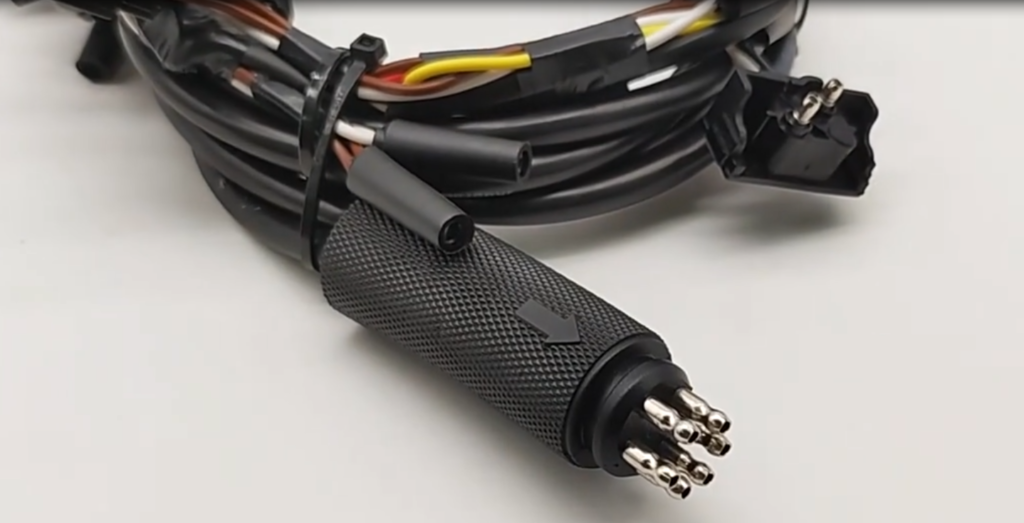Installing a trailer wiring harness may seem daunting, but with the right tools and a clear guide, it can be a straightforward process. Whether you’re a seasoned DIY enthusiast or a first-time installer, this step-by-step guide will help you through the installation process to ensure your trailer’s electrical system functions correctly and safely.
Tools and Materials Needed
Before you start, gather the necessary tools and materials:
- Trailer wiring harness kit
- Wire strippers
- Electrical tape
- Heat shrink tubing
- Wire connectors (butt connectors, quick splices, etc.)
- Screwdriver set
- Socket set
- Pliers
- Test light or multimeter
- Zip ties or cable clamps
- Dielectric grease (optional for corrosion prevention)
Step 1: Read the Instructions
Begin by thoroughly reading the instructions that come with your trailer wiring harness kit. Each kit may have specific guidelines and tips for installation. Understanding these instructions will help you avoid mistakes and ensure a smooth installation process.
Step 2: Prepare Your Vehicle and Trailer
- Disconnect the Battery: Before starting, disconnect the negative terminal of your vehicle’s battery to prevent electrical shorts or shocks.
- Park Safely: Ensure your vehicle and trailer are parked on a flat, stable surface. Engage the parking brake and chock the wheels if necessary.
- Inspect Existing Wiring: Check the existing wiring on your vehicle and trailer. Look for any signs of damage or corrosion that may need to be addressed before installing the new harness.
Step 3: Locate the Wiring Access Points
Identify where the wiring harness will connect to your vehicle’s electrical system. This is usually near the rear bumper or under the vehicle near the taillights. Most vehicles have a factory wiring harness plug or a designated access point for trailer wiring.
Step 4: Connect the Wiring Harness to the Vehicle
- Attach the Ground Wire:
- Locate a suitable grounding point on the vehicle’s chassis. This should be a clean, bare metal surface.
- Use a ring terminal to secure the ground wire from the harness to the grounding point. Tighten it securely with a screw or bolt.
- Connect the Wiring to the Vehicle’s Taillights:
- Use a wire stripper to strip about 1/4 inch of insulation from the vehicle’s taillight wires.
- Match the colors of the wiring harness to the vehicle’s wiring. Typically, the wiring color codes are:
- White: Ground
- Brown: Tail/Running Lights
- Yellow: Left Turn/Brake Light
- Green: Right Turn/Brake Light
- Blue: Electric Brakes (if applicable)
- Black/Red: 12V Power (if applicable)
- Purple/Light Blue: Reverse Lights (if applicable)
- Use butt connectors or quick splices to connect the harness wires to the corresponding vehicle wires. Crimp the connectors securely and use heat shrink tubing to insulate the connections.
- Run the Wiring to the Trailer Hitch:
- Route the wiring harness along the vehicle’s frame, avoiding any moving parts, sharp edges, or hot surfaces.
- Use zip ties or cable clamps to secure the wiring in place.
Step 5: Install the Trailer Side Wiring
- Mount the Trailer Connector:
- Choose a suitable location on the trailer for mounting the trailer connector. This is usually near the trailer’s coupler.
- Use screws or bolts to mount the connector securely to the trailer frame.
- Connect the Trailer Wiring:
- Strip about 1/4 inch of insulation from the trailer’s wiring.
- Match the colors of the trailer wiring to the corresponding pins on the trailer connector.
- Use wire connectors to secure the connections, and apply heat shrink tubing for insulation.
- Ground the Trailer Wiring:
- Attach the ground wire from the trailer wiring harness to a clean, bare metal surface on the trailer frame.
Step 6: Test the System
- Reconnect the Vehicle Battery: Reconnect the negative terminal of your vehicle’s battery.
- Test the Lights and Brakes:
- Connect the trailer to the towing vehicle.
- Use a test light or multimeter to check the functionality of the trailer lights, turn signals, brake lights, and any other electrical components.
- Ensure all lights and brakes are working correctly.
Step 7: Finalize the Installation
- Secure Loose Wires: Use zip ties or cable clamps to secure any loose wires along the vehicle and trailer frames.
- Apply Dielectric Grease: Optionally, apply dielectric grease to the connectors to prevent corrosion and ensure a secure electrical connection.
- Double-Check Everything: Perform a final inspection of all connections and make sure everything is secure and properly insulated.
Tips for a Successful Installation
- Follow the Manufacturer’s Instructions: Always refer to the specific instructions provided with your wiring harness kit.
- Use Quality Connectors: Invest in high-quality wire connectors and heat shrink tubing to ensure reliable connections.
- Protect the Wiring: Route the wiring away from moving parts, sharp edges, and hot surfaces to prevent damage.
- Regular Maintenance: Periodically inspect the wiring harness and connectors for signs of wear or corrosion, and address any issues promptly.
Conclusion
Installing a trailer wiring harness is a manageable task with the right tools and guidance. By following this step-by-step guide, you can ensure a safe and reliable connection between your vehicle and trailer, enhancing your towing experience. If you encounter any difficulties or have questions, don’t hesitate to contact WiringLabs for expert assistance.
